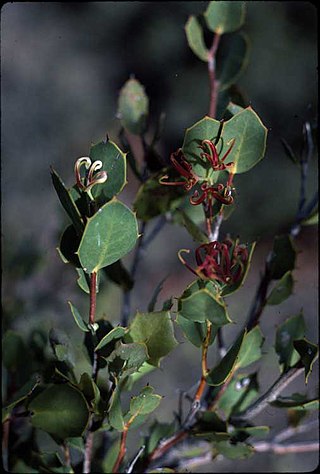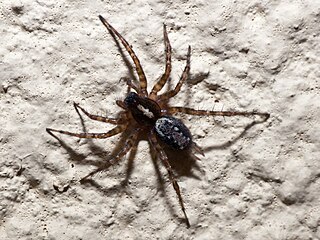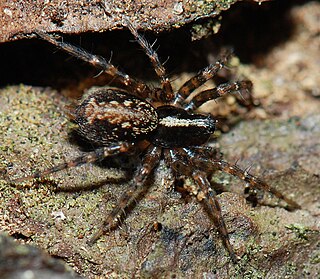
The yellow-footed tortoise, also known as the Brazilian giant tortoise, commonly referred to as the Brazilian giant turtle, or more commonly, the big turtle, is a species of tortoise in the family Testudinidae and is closely related to the red-footed tortoise. It is found in the Amazon Basin of South America. The species name has often been misspelled as denticulata, an error introduced in the 1980s when Chelonoidis was elevated to genus and mistakenly treated as feminine, an error recognized and fixed in 2017.

Primula denticulata, the drumstick primula, is a species of flowering plant in the family Primulaceae, native to moist alpine regions of China, Afghanistan, Bhutan, India, Kashmir, N Myanmar, Nepal, and Pakistan. It is an herbaceous perennial growing to 45 cm (18 in) tall and wide, with rosettes of oval leaves and sturdy stems bearing spherical umbels of purple flowers in late spring and early summer. Flowers can also be lavender, pink, or white in colour.

Hakea denticulata, commonly known as stinking Roger is a shrub tree endemic southern Western Australia. One of the many species of Australian plant described by the botanist Robert Brown. A compact shrub 1–2 m (3–7 ft) high and wide with red flowers in the spring with an unpleasant odour.

Cerobasis guestfalica is a species of Psocoptera belonging to the family Trogiidae. It is widespread in the world.
Cerobasis rosae is a species of Psocoptera from the Trogiidae family that is endemic to Canary Islands.
Cerobasis pineticola is a species of Psocoptera from the Trogiidae family that is endemic to Canary Islands.
Cerobasis nigra is a species of Psocoptera from the Trogiidae family that is endemic to Madeira.
Cerobasis rosae is a species of Psocoptera from the Trogiidae family that is endemic to Madeira.
Cerobasis longicornis is a species of Psocoptera from the Trogiidae family that is endemic to the Canary Islands.
Cerobasis insularis is a species of Psocoptera from the Trogiidae family that is endemic to the Canary Islands.
Cerobasis harteni is a species of Psocoptera from the Trogiidae family that can be found in the Azores and North Africa.
Cerobasis albipes is a species of Psocoptera from the Trogiidae family that is endemic to Madeira.
Cerobasis amorosa is a species of Psocoptera from the Trogiidae family that is endemic to Cyprus.
Cerobasis ericacea is a species of Psocoptera from the Trogiidae family that is endemic to Canary Islands.
Cerobasis canariensis is a species of Psocoptera from the Trogiidae family that can be found on Canary Islands and in Germany.
Cerobasis annulata is a species of Psocoptera from Trogiidae family that can be found in Austria, Azores, Belgium, Cyprus, France, Germany, Great Britain, Greece, Italy, Luxembourg, Madeira, Norway, Poland, Portugal, Switzerland, and the Netherlands.

Odontoponera is a small Southeast Asia genus of ants in the subfamily Ponerinae.

Textrix is a genus of funnel weavers first described by Carl Jakob Sundevall in 1833. They have a mainly European distribution, with one species in Ethiopia. The type species of the genus is Textrix denticulata.

Textrix dendiculata, the toothed weaver, is a funnel web spider of the family Agelenidae found in much of Europe. It was described by the French entomologist Guillaume-Antoine Olivier in 1789. An older name coined by Martini & Goeze in 1778, Aranea cruciger, has been declared a nomen oblitum, allowing Olivier's later name to stand.

Caladenia denticulata subsp. denticulata, commonly known as the yellow spider orchid, is a plant in the orchid family Orchidaceae and is endemic to the south-west of Western Australia. It has a single erect, hairy leaf and one or two yellowish flowers which have a white labellum with pale red markings.







